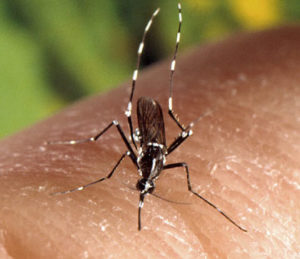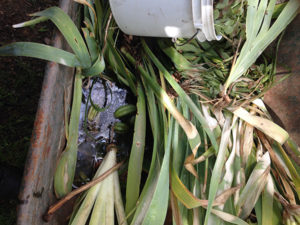Mosquito Populations Likely to Increase
go.ncsu.edu/readext?539225
en Español / em Português
El inglés es el idioma de control de esta página. En la medida en que haya algún conflicto entre la traducción al inglés y la traducción, el inglés prevalece.
Al hacer clic en el enlace de traducción se activa un servicio de traducción gratuito para convertir la página al español. Al igual que con cualquier traducción por Internet, la conversión no es sensible al contexto y puede que no traduzca el texto en su significado original. NC State Extension no garantiza la exactitud del texto traducido. Por favor, tenga en cuenta que algunas aplicaciones y/o servicios pueden no funcionar como se espera cuando se traducen.
Português
Inglês é o idioma de controle desta página. Na medida que haja algum conflito entre o texto original em Inglês e a tradução, o Inglês prevalece.
Ao clicar no link de tradução, um serviço gratuito de tradução será ativado para converter a página para o Português. Como em qualquer tradução pela internet, a conversão não é sensivel ao contexto e pode não ocorrer a tradução para o significado orginal. O serviço de Extensão da Carolina do Norte (NC State Extension) não garante a exatidão do texto traduzido. Por favor, observe que algumas funções ou serviços podem não funcionar como esperado após a tradução.
English
English is the controlling language of this page. To the extent there is any conflict between the English text and the translation, English controls.
Clicking on the translation link activates a free translation service to convert the page to Spanish. As with any Internet translation, the conversion is not context-sensitive and may not translate the text to its original meaning. NC State Extension does not guarantee the accuracy of the translated text. Please note that some applications and/or services may not function as expected when translated.
Collapse ▲Last week, NCDHHS announced the first death in 2018 due to West Nile virus (WNV). Although details were sparse (in keeping with DHHS’s policy on patient privacy), the news media reported that it was an elderly individual who lived in Cumberland Co.
As of July 10th of this year, the CDC had reported 14 cases of West Nile virus nationwide with nine of those occurring in California and none were in North Carolina at that time. As noted on the CDC website, about 80% of people infected with WNV do not develop any symptoms. About 20% of infected people develop a fever with other symptoms. Most people with this type of West Nile virus disease recover completely, but the fatigue and weakness can last for weeks or months. Less than 1% of infected individuals develop severe illnesses. However, people over 60 years of age or have other medical conditions including compromised immune systems are at greater risk.
In spite of this tragic event, this is not a time to panic and start large-scale chemical warfare to eradicate mosquitoes everywhere. Before investing in a new sprayer or yard fogger, everyone should try investing a little “sweat equity” in some more long-term and highly effective measures to reduce mosquito breeding sites. As always, this starts by finding and eliminating standing water in and around your property. If you live in a community that has common areas, these need to be checked as well. A good example is this wheelbarrow in someone’s yard where the combination of water and decaying vegetation attract female mosquitoes to lay their eggs. Although there are products, such as Mosquito Dunks, available to treat standing water, don’t use them as an excuse for not eliminating the water where possible. These pesticides are temporary in nature and mosquitoes will return to those areas.
In terms of treating property for mosquitoes, it is particularly important this time of year to make sure you “look before you spray” particularly when spraying adjacent to neighbors’ properties. Remember that insecticide applied in the air will drift. Answer a few questions before you treat:
- What’s the predicted weather? What is the direction and speed of any wind that could cause the pesticide to drift off your property and onto someone else’s?
- What’s on the other side of the fence or row of shrubs that you share with your neighbor? the neighbor’s dog? the neighbor’s kid(s)? the neighbor’s beehives? a fish pond?
- Are pet water/food bowls, children’s toys covered or removed from the area?
- Are you about to spray shrubs that are in bloom? What does the pesticide label say about treating plants that are in bloom? does it prohibit or limit spraying when bees are not visiting the flowers? If so, don’t use the product or (if allowed), change the time at which you plan to treat.
- Do you (or your neighbor) have a vegetable, fruit or herb garden? Is the pesticide that you’re about to use permit spraying edible plants? If not, don’t use the chemical or don’t eat the plants.
Lastly, don’t forget to wear repellent when you’re grilling, gardening, or hiking outdoors, particularly if you are in one of those at-risk groups.




